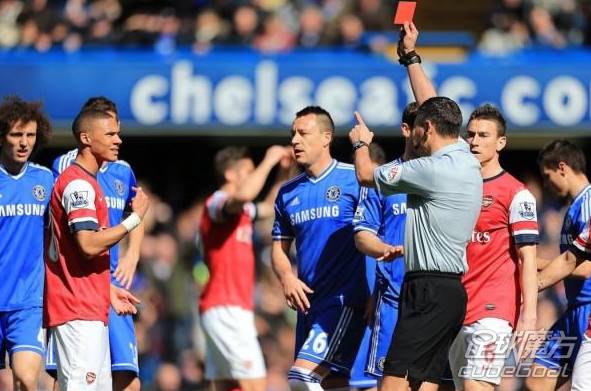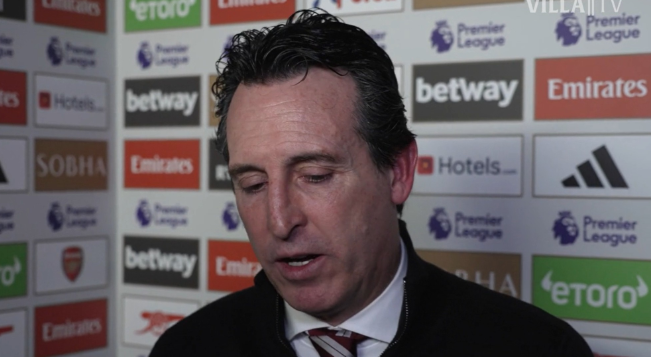
The Ruby Warrior Card, known as the most terrifying killing weapon on the soccer field, it seconds people invisibly and treads snow without a trace. And if our black archbishop referee if the wrong use of such a weapon, what will be the result? Let's take a look at those strange red cards in the soccer world!
1. Simunić accumulated 3 yellow cards before being sent off
The power of the Ruby Warrior card is eclipsed when the referee has already shown you 2 yellow cards and you continue to stay comfortably on the field for the match, which former captain Simunić has enjoyed. In the 2006 World Cup match between Croatia and Australia in Germany, the referee, Englishman Ball, showed three yellow cards to Simunić before sending him off. He should have been sent off in the 87th minute, but the referee forced him to stay alive for six minutes, and in the 93rd minute showed him his third yellow card of the match. Borel also became the first referee to send off a player with three yellow cards.
2. Mascot revolt "penalizes" the umpire
Mascots are mostly used to liven up the atmosphere of the stadium, but when a mascot can show a red card to the referee, what kind of game is it going to be? Not long ago in the Ruhr derby, Schalke 04's mascot Erwin on the duty referee Zwier showed a red card, and the arrogant Zwier thought it was a mascot to question his law enforcement, in the Erwin to him to show him a red card, he twice refused to accept the red card, and the red card on the ground alone. Perhaps the saddest red card of the century in terms of fate!
3. The referee is blind and penalizes the wrong person.
The classic example of this is Marriner, one of the "Fantastic Four". In the city derby with Chelsea, Arsenal defender Gibbs deserved a red card for a handball, which was not controversial. Instead, Marriner showed the red card to an innocent Chamberlain at a distance. Do these two big brothers really look that much alike? Apart from their slightly soy-colored skin, there is no resemblance, but Marriner still firmly believed that his decision was accurate, and eventually Chamberlain could only take the blame for Gibbs and left the field in anger. I believe that seeing this scene, the Gao Linzmann in the far east will also recall the fear of being dominated by the face-blind referee on that day.
It was the 2005 East Asian Qualifiers, when Gao Linzman was still a youngster, and the match against South Korea was his adult national team debut. However, his national team debut lasted only five minutes. At that time, Chinese defender No. 5 Li Weifeng committed a tactical foul on a South Korean player, and then referee Yuichi Nishimura, after a serious discussion with the fourth official, sent off No. 13 striker Gao Lin, who could only end his debut in the national football team in a hasty manner after some fruitless verbal battles.
4. The referee red cards himself
During the Premier League match between Wigan Athletic and Fulham on September 23, 2012, referee Lee Probert was unable to hold on to the game due to injuries sustained in a collision with a player, and after summoning the team doctor, he "showed" himself a red card and "sent off" himself. "Wigan captain Caldwell also pointed a finger at Sidwell, who fell on Probert, suggesting that the referee should have sent off the real culprits so that Wigan could have had an extra man. The referee returned to the game after a short period of treatment and the red card didn't seem to make a difference.
5. Red card and yellow card of your own choosing, to be sent off or not to be sent off you guess?
Since when is that a good thing? Players get penalized after a foul and you get to guess? A red-card foul draws a yellow card and you don't get sent off? Hahaha, this would never happen in an official match, but former Seoul FC manager Choi Yong-soo, who was a guest referee in the K-League All-Star Match 2014 between K-League and Park Ji-seung, refereed the match in the second half. After a player committed a foul, Choi signaled for a penalty and asked the player to choose whether to receive a yellow or red card while blindfolded. However, when Choi made the player choose, he intentionally raised the yellow card upwards, so that the player who committed the foul was "lucky" to escape the red card. However, when Choi himself committed a foul, he would not have such luck.
6. Can red and yellow cards still be used as whistles?
What happens when our Judge in Black realizes he's out of whistles? Well, let's replace it with a yellow or red card for a bit! In the 3rd round of the J2 league last year, Okayama Green Pheasant hosted Kyoto Immortals, a player of Okayama Green Pheasant was put down by a player of Kyoto Immortals, a player of Kyoto Immortals was obviously dissatisfied with the downing of this player of Okayama Pheasant and was ready to go up to question the player, at this time, the referee's yellow card hadn't been put into his pocket, seeing that both sides had the precursor to a clash, he was ready to stop the game with a whistle, but I don't know how it happened that the on-duty referee actually The referee was ready to stop the game with a whistle, but he didn't know what was going on and the referee on duty was blowing the yellow card as a whistle. This scene makes people laugh. However, there are many netizens said, leaves can be blown, yellow cards how to blow not loud?
7. The referee forcibly releases the player to send him off
In a 2002 match in the Chilean Primera Division, referee Camazar did something ridiculous in the stadium. During a match between the Chilean Italians Bravehearts and Temuco, he kicked a player, Carrasco, and then red-carded him for a false start! The Chilean soccer federation was going to ban Camano for life, but the referee's union intervened and replaced it with a one-year suspension and regular treatment in a psychiatric hospital before the suspension was lifted. Rumor has it that Camano had an unfortunate breakup before the game, and blew the penalty in an emotionally and mentally unbalanced state.
8. 22 consecutive red card penalties for all the players in the game
On October 9, 1986, the two strongest teams in Mexico's Primera Division, America and Guadalajara, had 29 minutes left in the game, when an America defender committed a serious foul on an opposing striker, and the two men fought without saying a word, triggering a ** beatdown of the entire team of both teams. The referee was furious, pulled out the red card and raised it 22 times, sending off all 22 players from both sides. This move can be said to be unprecedented, and the later is difficult to match, creating an insurmountable mountain in the history of soccer. Interestingly, while the players were sent off, the fans in the stands were fighting again. Perhaps the referee needs to show the stands a few hundred more red cards, I wonder if his unicorn arm can hold out?
And this comes after a dispute suddenly erupted between the players of the two teams at the end of a match between Celto Sineo U20s and Flamengo U20s in a youth league in Brazil. The Flamengo players accused the opposing coach of pushing their player, and the two teams started to fight with each other. After the final whistle was blown, the referee had to show 11 red cards.
Source:






























